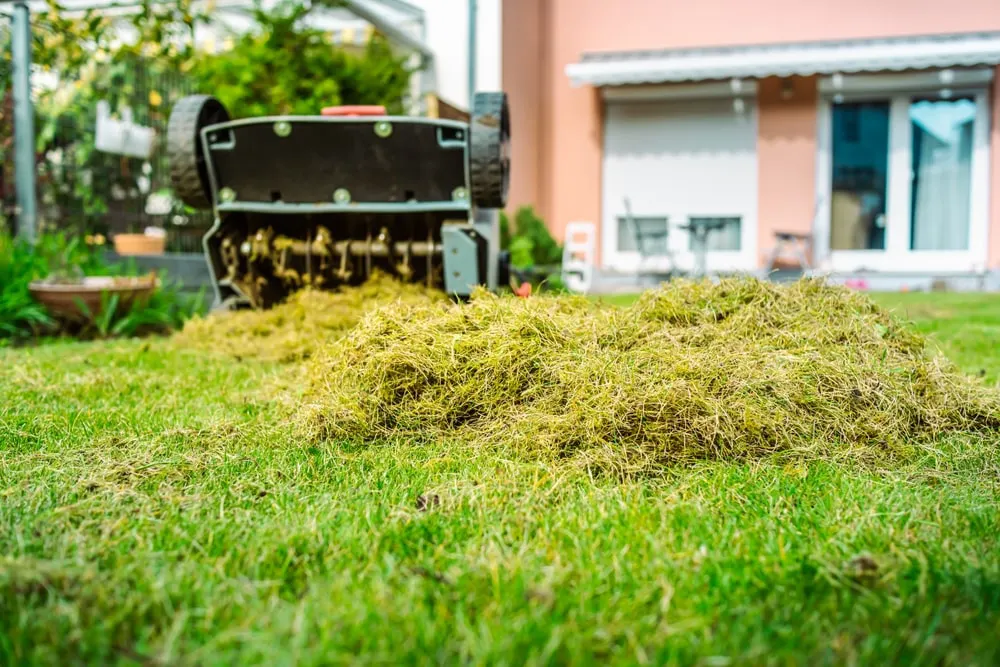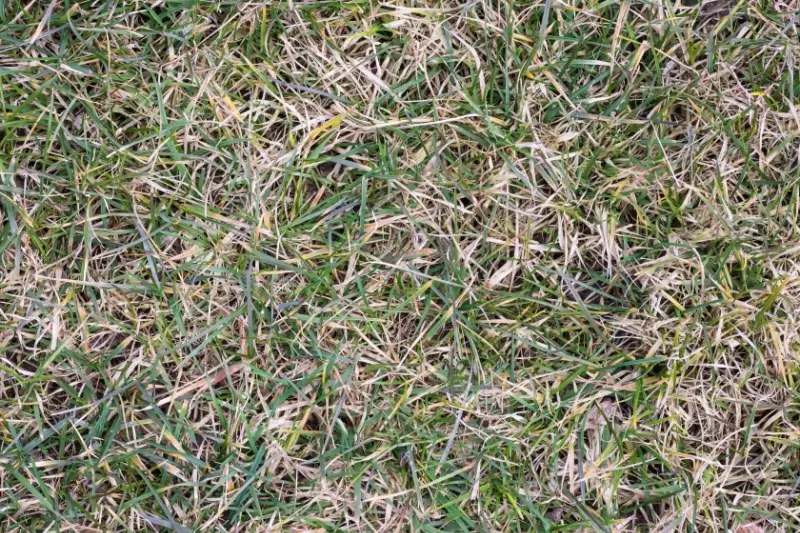
The Grounds Guys provide expert insights on the best ways to manage lawn thatch.
|
Over time, dead grass stems, roots, rhizomes, and other organic matter can build up between your healthy living grass and the surface of the soil. This is called thatch, a normal part of many lawns. In fact, a little bit of grass thatch can be a good thing, helping to moderate soil temperatures and retaining moisture. However, as is often the case, too much of a good thing can quickly turn into a problem. The same is true of lawn thatch.
What is thatch? What causes it? And, most importantly, how can you dethatch your lawn?
Table of Contents:
The Formation of Thatch: What Causes It?
What is thatch in a lawn? As your grass grows, it continually produces new leaves, stems, and roots as older parts die off. In a well-balanced lawn, these older parts will decompose and help nourish the soil. However, in many cases, these older, dead pieces of grass build up more quickly than they can decompose. That’s how you get lawn thatch.
Why does this happen? A number of factors can cause thatch buildup on your lawn.
Type of Grass
Certain grass species simply grow more quickly and densely than others and tend to create heavy layers of thatch. These species include Kentucky bluegrass, Bermuda grass, and creeping bentgrass.
Too Much Fertilization
If you add too much fertilizer to your lawn, it can cause your grass to grow rapidly and shed older parts.
Poor Soil
Compacted, poorly draining soil can slow down the decomposition process, leading to thicker layers of thatch.
How to Identify Thatch in Your Lawn

Do you have a grass thatch problem? Surprisingly, it can sometimes be difficult to determine unless you know specifically what to look for. First, give your lawn a visual inspection. Search for a distinct layer of brown, spongy material between the grass blades and the soil surface.
In addition to trying to see lawn thatch with the naked eye, you can perform the “footprint test.” Walk across different areas of your lawn and see how quickly the grass rebounds after being compressed. If the grass comes back up slowly or remains flat, you may be dealing with a thick layer of thatch.
A third, and one of the best ways to look for thatch is to take a soil plug from different parts of your lawn using a core aerator or a sharp trowel. If you see a thick, spongy layer in the cross-section of the plug between the grass and the soil, you’ve got a thatch problem on your hands.
The Impact of Thatch on Lawn Health
A little thatch can actually be a good thing, but when that layer gets to be more than half an inch thick, it can start to negatively impact your lawn.
Blocks Root Growth
When thatch accumulates, it can create a barrier between the grass roots and the soil, preventing roots from growing deeply. Grass with a shallow root system is less resilient to drought, heat, and stress.
Less Water Absorption

Thatch doesn’t just feel spongy under your feet. It can also act like a sponge, absorbing water that won’t reach the soil where your grass roots need it. Thatch can also cause water to pool or run off.
Poor Aeration
Think of thatch as one of those huge blockers on a football team. It doesn’t let oxygen or nutrients through to your soil, which can lead to compaction, low oxygen levels, and nutritional deficiency.
Attracts Pests and Diseases
A heavy layer of thatch is practically an invitation for unpleasant lawn pests and diseases to set up shop. It provides an ideal environment for chinch bugs, billbugs, dollar spots, brown patches, and more.
How to Manage Lawn Thatch
.webp)
You can rescue your lawn from the tangled clutches of grass thatch. One of the best ways to prevent thatch buildup is to simply stick to a regular mowing schedule at the proper height for your grass type. This encourages deeper root growth and decomposition.
If you’re already dealing with thatch overload on your lawn, it’s time to dethatch. You can use a dethatching rake, or a specialized machine called a power dethatcher to cut through the thatch layer. Another option is vertical mowing, which involves using a machine with vertical blades that cut through the thatch layer and bring it to your lawn’s surface.
Whatever dethatching method you use, the best time to dethatch is when your grass is actively growing. Cool-season grasses will benefit from breaking down lawn thatch in late summer or early fall, and warm-season grasses in late spring or early summer.
Need Help Getting Rid of Thatch?
Getting rid of lawn thatch can be time-consuming, difficult, and expensive if you don’t own a dethatching machine. In many cases, it can be best to call in the experts like The Grounds Guys®.
When you contact us, we can assess your lawn and determine if you’ve got a thatch problem. If the answer is yes, we’ll take care of it, giving your lawn a chance to breathe, literally. Even better, we can perform regular lawn care and seasonal services to help prevent the buildup of thatch in the future. Your satisfaction is our number one priority. That’s our Neighborly Done Right Promise™ to you.
Ready to get started? Your local The Grounds Guys team is happy to come to your property and give you a free estimate for dethatching and any other lawn-related services you need.